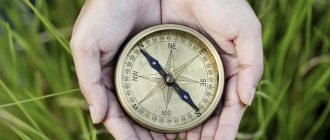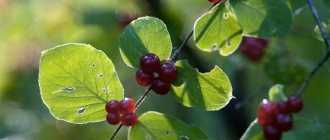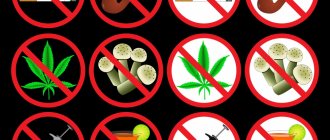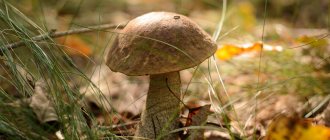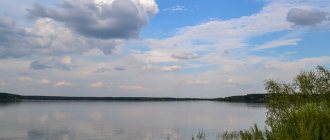Many living creatures that do not have strong paws, fangs and claws have found another, perhaps more effective and deadly method of attack or defense that helps them survive in the wild - poison. This formidable weapon can vary in power, and it doesn’t matter where its owner lives - in water or on land.
Terrible leaf climber (lat.Phyllobates terribilis). flickr/AJ Haverkamp
Some poisonous creatures are dangerous not only for other species of animals, but also for humans: some with their bite can cause minor illness, others - severe pain and serious disorders of body functions, while others are quite likely to lead to death. However, there is no need to be panicky about such inhabitants of the planet, but “knowing them by sight” and being fully armed will not hurt.
Scorpion Leiurus quinquestriatus
Contrary to popular belief, most scorpions are not so dangerous to humans, since the bites of many of them lead to minor illness and inconvenience (pain, slight numbness of tissues and swelling), but all this can be survived.
Leiurus quinquestriatus (lat. Leiurus quinquestriatus). flickr/Chundulak
But if you encounter Leiurus quinquestriatus, you risk not only experiencing severe pain, convulsions and fever, ending in paralysis and coma, but ultimately, you will simply die. The venom of these scorpions contains a powerful cocktail of neurotoxins that will not spare anyone. The dangerous skarpion lives in the Middle East and North Africa.
Brazilian wandering spider
The Brazilian wandering spider (lat. Phoneutria) is a seemingly small, harmless spider, but this is only in appearance... In fact, this small animal is distinguished by its swiftness, activity and incredibly strong poison. In 2007, it was even included in the Guinness Book of Records as the most poisonous and dangerous spider on the planet, having claimed more than one human life.
Brazilian wandering spider (lat. Phoneutria). flickr/mcvmjr1971
It lives in South America, preferring human habitation, where it can hide in shoes, hats and various other clothes. He does not weave webs and does not sit in one place, which is why he is called “wanderer.” He has one more feature - he loves bananas very much and will not miss the opportunity to eat them, which is why he got his 2nd name - “banana spider”.
It feeds on fruits, its own kind, various insects, and also sometimes attacks lizards and birds that are larger than it. The unusual behavior of a spider increases the chances of meeting it, which means the risk of being bitten by it increases.
Poisonous arachnids
All spiders are more or less poisonous. But the bites of most of them are not dangerous to humans or even painless.
The world's deadliest spider is the Brazilian wandering spider or banana spider (see Appendix II, page 16).
These spiders are dangerous not only for their poison, but also for their behavior: they do not sit still and do not weave webs, they wander the earth, hiding in buildings, clothes, shoes, cars, anywhere; which significantly increases the risk of unexpectedly meeting them and being bitten.
Scorpion
Scorpions are arachnids, medium to large in size, found in warm climates. The scorpion grabs its prey and bends its abdomen forward over its back and plunges the needle into the victim's body. Small scorpions are not dangerous to humans, although the literature describes a number of deaths, especially among children, from injections of large tropical scorpions.
The thin posterior belly (“tail”) of scorpions ends in a sharp curved “sting” connected to two poisonous glands. Scorpions often live in villages, hiding in the walls of houses, under stones in gardens. In search of prey, they often crawl into houses, where they hide in shoes, clothes, and furniture. Scorpion stings are painful and accompanied by severe swelling and redness of the skin. During the first hour, convulsions develop, breathing, swallowing, and speech become difficult. Pain in the heart area, chills, nausea, and shortness of breath appear. First aid - heating pads, hot bath and hot drinks. The scorpion uses its venom for protection.
Scorpio Leius quincestriatus (see Appendix III, p. 17) is deadly to humans.
Leirus is a very dangerous species of scorpion because its venom is a powerful cocktail of neurotoxins that causes intense and unbearable pain, followed by fever, followed by coma, convulsions, paralysis and death. Leiruses are common in North Africa and the Middle East.
Lonomiya butterfly caterpillar
The Lonomia butterfly (lat. Lonomia obliqua) is a practically unremarkable butterfly. These butterflies live in the tropical forests of South America and also take root well in ordinary gardens. They have a rather plain appearance and harmless behavior. Whether it's the caterpillar of this butterfly! They are the perfect weapon created by nature itself.
Caterpillar of the Lonomia butterfly (lat. Lonomia obliqua). flickr/Adam Carvalho
The body of this caterpillar is covered with branched thorns, similar to spruce branches, and these thorns contain the most dangerous poison, which prevents blood clotting. As soon as the caterpillar touches the skin of a person, they instantly pierce it and poison immediately penetrates into the blood. It rapidly spreads throughout the body, causing profuse bleeding in the organs, which may well lead to hemorrhage in the brain.
Sandy efa
Sand epha (lat. Echis carinatus) is a pretty cute name, isn’t it? This snake is a resident of the foothills and valleys of Central Asia and Africa, where almost everyone knows about this creature and makes up legends about it. The efa is especially dangerous for a person; if it bites, it is not a fact that the person will survive, but if he survives, he will remain crippled forever. More people die each year from this snake's bite than from any other snake.
Sand epha (lat. Echis carinatus). flickr/Frupus
Most often, people themselves provoke the sand epha to attack, but I would like to note that this snake is famous for its nervousness and can attack for no apparent reason. Its venom is very toxic: once in the blood, it sharply reduces the level of fibrinogen in it, which leads to severe bleeding in the organs. According to statistics, every fifth person bitten by this snake dies.
Taipans
Taipans (lat. Oxyuranus) - belongs to poisonous snakes from the adder family and lives in Australia. There are only two types of these snakes: the taipan (lat. Oxyuranus scutellatus) and the cruel or ferocious snake (lat. Oxyuranus microlepidotus). Taipans are very shy and try to avoid meeting people.
Taipan (lat. Oxyuranus). flickr/Rob Valentic
These snakes are very poisonous and use their poisonous “tool” exclusively for hunting. The venom of taipans is 300 times more toxic than the venom of the famous cobras. But if, nevertheless, a taipan bites a person, then in this case there is an antidote that should be administered within an hour.
The most poisonous animals in the world | Video
Related Posts
Top 10 Most Poisonous Plants in the World
Top 10 Most Poisonous Snakes on the Planet
Top 10 Most Poisonous Mushrooms in the World
Blue ringed octopus
Blue-ringed octopus (lat. Hapalochlaena lunulata) - this little one, no larger than the size of a tennis ball, is very dangerous. Its poison can kill up to 26 adults! This mollusk lives in the waters of Australia and Japan.
Blue-ringed or blue ringed octopus (lat. Hapalochlaena lunulata). flickr/EunJae Underwater Photography
There is no antidote, but if treatment is started in time, death can be avoided. If you do not seek help in time, you may experience numbness in the limbs and tongue, loss of vision, difficulty speaking, suffocation, and then complete paralysis, lung failure and heart failure.
Message about Poisonous Animals of Russia
In Russia you can find quite a lot of dangerous animals, they are especially common in the south of our country.
Some representatives of the animal world are not poisonous from the moment of birth, but only become so by eating poisonous plants or living in a contaminated area. Others themselves produce a toxic substance in special glands. There are also animals that can cause harm with sharp thorns or teeth.
The common or hellish viper lives in the south of the European part of Russia, especially in swampy places. The bite of a hell viper is very dangerous, but rarely fatal.
Common hornets are widespread in the European part of Russia. If the victim experiences an allergic reaction to a hornet sting, immediate medical attention must be provided, otherwise death may result.
One of the most poisonous fish in Europe, the sea dragon, lives in the Black and Mediterranean Seas. Its poisonous thorn is dangerous, especially for those who swim near the shore or go diving. A thorn prick causes acute, long-lasting pain.
Any animal can harm a person only in self-defense. Therefore, you should not approach wild animals, especially in their natural habitat.
Fugu fish
Fugu fish, or ball fish (lat. Takifugu rubripes) is the most poisonous fish on the planet. But despite its toxicity, it has become a delicacy for many residents of Japan and Korea. The interesting thing is that all these people know very well who they are dealing with, but they cannot resist the temptation.
Fugu fish, or ball fish (lat. Takifugu rubripes). flickr/Akabayashi
The main thing here is to prepare it correctly, which is what licensed chefs at local restaurants actually do. Poison, which causes suffocation, is contained on the surface of the body and inside some organs of this fish.
Stonefish, or wartfish
Stonefish, or wartfish (lat. Synanceia verrucosa) is a real “beauty”, which also boasts of its poison. This is a resident of the Pacific and Indian oceans. The poison of this fish, contained in its dorsal ridges, poses a real threat to predators.
Stonefish, or wartfish (lat. Synanceia verrucosa). flickr/Cubozoa
If this poison enters the human body, he will experience unbearable pain! The pain is so severe that the victims tried to amputate their limbs affected by this poison. It should be noted that this condition does not last long, then the person is paralyzed, then tissue death occurs and if help is not provided in time, death occurs.
Main groups of poisonous animals
accumulate harmful elements in their bodies throughout their lives by eating poisonous plants or living in conditions of severe environmental pollution. This is how animals themselves become poisonous. It is absolutely forbidden to eat them, otherwise you can get poisoned.
Nature has armed the rest of the animals with wounding devices: sharp teeth, stings, thorns or thorns.
Poisonous species are found among insects, arthropods, reptiles, fish, birds and even mammals.
Box jellyfish, sea wasp
The Australian box jellyfish (lat. Chironex fleckeri) is the most “famous” inhabitant of the waters of Australia. An incredible number of people have suffered from this jellyfish. When it is known that box jellyfish have appeared near the coast, all local beaches are immediately closed. Over the past 60 years, box jellyfish have claimed about 6,000 human lives.
Australian box jellyfish (lat. Chironex fleckeri)
Its venom is considered the most toxic in the world: it quickly affects the nervous system, heart and skin cells. At the same time, people experience terrible, indomitable pain, which plunges them into a state of shock. If a person is not pulled out of the water in time and taken to the hospital, he may drown or die from cardiac arrest.
The most poisonous jellyfish: Sea wasp
Box jellyfish (jellyfish characterized by a rectangular bell shape) are by far the most dangerous invertebrate animals in the world, and the sea wasp (Chironex fleckeri) is considered the most poisonous species of jellyfish on the planet. The tentacles of the sea wasp are covered with nematocytes - stinging cells, which, upon contact, cause burns.
Most people who come into contact with a sea wasp's tentacles experience excruciating pain, but a close encounter with this species can kill you in five minutes.
Cone snail
Cone snail (lat. Conidae). flickr/species on Normanby Island
The cone snail (lat. Conidae) is a predator and quite a successful hunter using its poison for this purpose, which is capable of killing about 20 people! When poison gets on the human body, severe pain and swelling occurs, and then paralysis of the respiratory system. There is no antidote for the cone snail poison yet, as it has not yet been studied enough.
Report on the topic Poisonous animals of Russia message
Many animals and insects can be poisonous.
This ability involves the production of poison, with the help of which animals kill or immobilize a victim they have caught. Viper. Quite a dangerous and poisonous reptile. Kills by biting with sharp poisonous fangs. Very common throughout Russia.
Fire frog. Pain and burns when touching it are inherent in this individual. It is distinguished by its bright color.
Wasps and bees. To protect their homes they use a sting, hitting their enemies with it.
Hornet. The largest representative of the wasp family. It is not found so often in Russia, only in the European part of the country.
Sacred Treecreeper
Sacred poison dart frog (lat. Dendrobates leucomelas). flickr/Thor Hakonsen
If you've ever been to the forests of Central and South America, you've probably seen small, beautiful frogs, but you've probably been warned that they are extremely poisonous and should not even be touched. The size of the sacred poison dart frog (lat. Dendrobates leucomelas) is about 1.5-5 cm, and there is so much poison in it that it can kill 10 people.
Terrible leaf climber
Terrible leaf climber (lat.Phyllobates terribilis) - the name speaks for itself. This poisonous amphibian, its poison (and this is only 1 g) is enough for several thousand people. It is as small as the dart frog - 2-4 cm and it also has a bright color. It is enough to touch a leaf crawler to receive a lethal dose of toxins.
Terrible leaf climber (lat.Phyllobates terribilis). flickr/Zeldenrust
Scientists believe that these frogs receive toxins from their victims (beetles, ants and other insects): they process and accumulate them, but no one has yet decided to test this theory.
